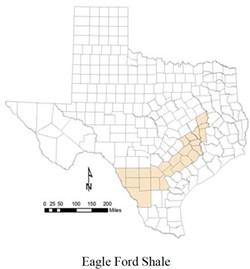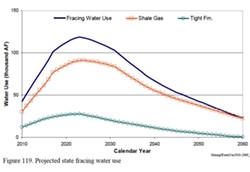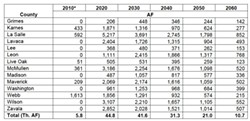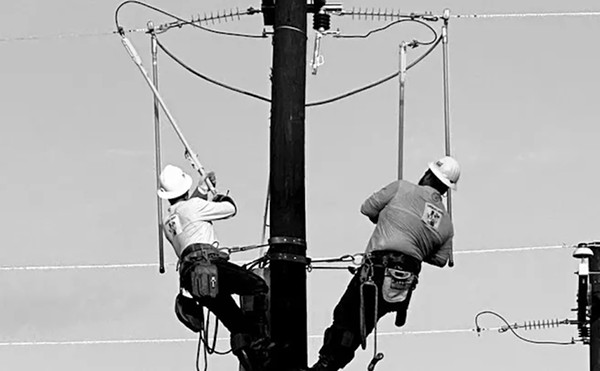Fracking Eagle Ford to take 14 billion gallons of water a year, while recycling stays low
By SA DAILY on Thu, Jul 14, 2011 at 12:34 pm
Across the state, today’s 37,000 acre-feet of water (or 12 billion gallons) used to frack deep shale formations for oil and gas is expected to climb to 120,000 acre-feet (39.1 billion gallons) by 2020-2030, according to a report released recently by the Texas Water Development Board. And — at best — only about 20 percent of that water would ever be able to be recycled for reuse.
The report, “Current and Projected Water Use in the Texas Mining and Oil and Gas Industry,” prepared by a team headed by the director of the Bureau of Economic Geology at UT for the Texas Water Development Board shows changing attitudes about the water needs for the development of the Eagle Ford shale stretching across South Texas.
But changes in South Texas caused the report’s earlier draft had to be modified. Originally the Eagle Ford was projected to peak in 2031 with 32,000 acre-feet of water needed per year (as reported by the Current earlier in the year in, “Texas fracking critics tour the Eagle Ford”). But final projections for the Eagle Ford have since been shifted up as high as 45,000 acre-feet (14.6 billion gallons) at peak production — now expected to hit seven years earlier in 2024.
Last year, the formation required around 6,000 acre-feet of water. This year’s activity has been considerably more demanding that that, creating a market for water sales from the region’s ranches.
And once we peak, don’t expect a decline in water use. New fields could possibly ramp up at that point, meaning that “water use, instead of decreasing after the peak of ~120 thousand AF would stay at that level or possibly higher for a longer period of time.”
Even when the Railroad Commission gets water recycling practices in place, only 16 percent (or less) of the water may be reusable until all industries involved create the necessary infrastructure, the report states. And even at that point, the most that may be recovered for reuse would be 20 percent.
The industry, obviously, is dependent on the price of natural gas. If natural gas climbs to $10 per thousand cubic feet (mcf), for instance, “All gas plays, even with marginal permeability, will be fraced,” the report states. But, if prices remain below $5/mcf, the projections may prove to be too high.
Below are the county-by-county projections. Water prospectors (and water defenders) start your engines!

KEEP SA CURRENT!
Since 1986, the SA Current has served as the free, independent voice of San Antonio, and we want to keep it that way.
Becoming an SA Current Supporter for as little as $5 a month allows us to continue offering readers access to our coverage of local news, food, nightlife, events, and culture with no paywalls.
Scroll to read more San Antonio News articles
Newsletters
Join SA Current Newsletters
Subscribe now to get the latest news delivered right to your inbox.




















